
Twelve of Hamilton’s outstanding female science students are the first recipients of the Clare Boothe Luce Undergraduate Research Award. The new annual award will fund up to 12 female scientists each summer over the course of three years as Clare Boothe Luce Scholars in the fields of computer science, physics and chemistry. The $144,600 grant from the Henry Luce Foundation will be matched with funds from Hamilton.
The purpose of the new program is to encourage more women to participate in meaningful science research opportunities as early in their academic careers as possible. Dean of Faculty Patrick Reynolds noted that, “The Clare Boothe Luce Program has a long record of encouraging women to become engaged in the sciences, and Hamilton is proud to be a part of that legacy through the partnership represented by this grant for the CBL Scholars. Our most accomplished women science students will be appointed CBL scholars each summer, enhancing Hamilton’s long-standing commitment to student-faculty research. In addition,” Reynolds said, “I look forward to recognizing the outstanding woman scientist in computer science, physics or chemistry next year through the Clare Boothe Luce Prize, supported also by the Foundation.”
The 2013 awardees in computer science are Rachel Friedman ’15, Katherine Droppa ’16 and Margaret Coleman ’16. In physics the awardees are Grace Williams-DuHamel ’15, Katie Pierce ’14 and McKinley Brumback ’14. Chemistry award recipients are Catherine Oglevee ’15, Lisbeth DaBramo ’15, Kristina Choinski ’15, Sky Aulita ’15, Leah Krause ’14 and Clare O’Grady ’14.
Computer Science
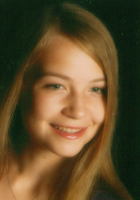 Rachel Friedman ’15 will work with Stuart Hirshfield, the Stephen Harper Kirner Professor of Computer Science on “Brain-Computer Interaction Techniques Applied to Human-Computer.” This project will explore new forms of evaluating human-computer interaction based on the measurement and analysis of brain function.
Rachel Friedman ’15 will work with Stuart Hirshfield, the Stephen Harper Kirner Professor of Computer Science on “Brain-Computer Interaction Techniques Applied to Human-Computer.” This project will explore new forms of evaluating human-computer interaction based on the measurement and analysis of brain function.
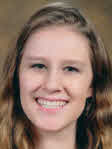
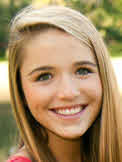 Katherine Droppa ’16 and Margaret Coleman ’16 will collaborate with their mentor, Associate Professor of Computer Science Alistair Campbell, on “Development of problem corpus for introductory computer science.” This project entails solving various short problems in programming languages such as Python and C++, categorizing the problems and their solutions in terms of concepts required and solution clarity, developing and solving new problems, finally creating a large database of problems for use on homework and exams.
Katherine Droppa ’16 and Margaret Coleman ’16 will collaborate with their mentor, Associate Professor of Computer Science Alistair Campbell, on “Development of problem corpus for introductory computer science.” This project entails solving various short problems in programming languages such as Python and C++, categorizing the problems and their solutions in terms of concepts required and solution clarity, developing and solving new problems, finally creating a large database of problems for use on homework and exams.
Physics
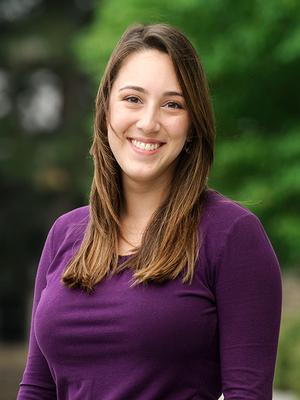 Katie Pierce ’14 and Professor of Physics Ann Silversmith will work on a project “Tb-Tb energy transfer rates in garnets: YAG, YGG, GGG.” Materials that contain the terbium as an ion (Tb3+) have the interesting property that they absorb ultraviolet light and glow bright green. They will study the interactions between neighboring Tb3+ ions in three different garnet crystals. The strength of the interaction is a strong function of inter-ion distance and is much weaker when two ions are far apart.
Katie Pierce ’14 and Professor of Physics Ann Silversmith will work on a project “Tb-Tb energy transfer rates in garnets: YAG, YGG, GGG.” Materials that contain the terbium as an ion (Tb3+) have the interesting property that they absorb ultraviolet light and glow bright green. They will study the interactions between neighboring Tb3+ ions in three different garnet crystals. The strength of the interaction is a strong function of inter-ion distance and is much weaker when two ions are far apart.
Pierce and Silversmith will first make crystals using a combustion synthesis; then they will shine ultra-violet light on the materials and study the emitted light in order to learn about how the ions interact with each other. In particular, they’re interested in how much the interaction strength varies in different host crystals. Large variation in the interaction strength means that it is more difficult to use cross-relaxation as a probe of inter-ion distances and ion distribution in sol-gel glass.
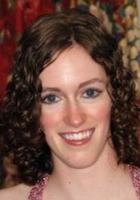
McKinley Brumback ’14 will collaborate with Associate Professor of Physics Brian Collett and Professor of Physics Gordon Jones on the project “Building a Rb Optical Pumping System.” They’ll build an optical pumping system based on a diode laser and a glass cell filled with Rb. Using electron paramagnetic resonance (EPR), they will study the optical pumping process and attempt to derive the spin temperature from the occupation of individual hyperfine levels.
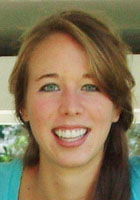 Grace Williams-DuHamel ’15 will work on a project titled “On the consistency of extensions to special relativity” and is research in theoretical physics that she will work on with Professor of Physics Seth Major. While we have no quantum theory of space-times as yet, preliminary results indicate a sub-structure on small scales, much like the energy levels of electrons in an atom. If this is correct then high energy photons traveling through such a space-time would “see” - and their speed would be affected by - this sub-structure. This project seeks to show whether an energy-dependent speed of light can be made compatible with the relativity principle.
Grace Williams-DuHamel ’15 will work on a project titled “On the consistency of extensions to special relativity” and is research in theoretical physics that she will work on with Professor of Physics Seth Major. While we have no quantum theory of space-times as yet, preliminary results indicate a sub-structure on small scales, much like the energy levels of electrons in an atom. If this is correct then high energy photons traveling through such a space-time would “see” - and their speed would be affected by - this sub-structure. This project seeks to show whether an energy-dependent speed of light can be made compatible with the relativity principle.
Chemistry
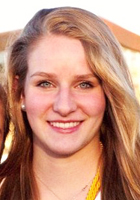 Catherine Oglevee ’15 will work with her mentor, Professor of Chemistry Karen Brewer, on “Incorporation of Europium and Terbium Antenna Chelated Complexes into Silica Sol-Gel Glasses. In this project Olgelvee will prepare compounds of europium and terbium and incorporate them into silica gels using two methods: formation of the gel around the compounds and immersion of the gels into a solution of the compounds. From this study they hope to learn how to best incorporate these compounds and to enhance their luminescence in these materials.
Catherine Oglevee ’15 will work with her mentor, Professor of Chemistry Karen Brewer, on “Incorporation of Europium and Terbium Antenna Chelated Complexes into Silica Sol-Gel Glasses. In this project Olgelvee will prepare compounds of europium and terbium and incorporate them into silica gels using two methods: formation of the gel around the compounds and immersion of the gels into a solution of the compounds. From this study they hope to learn how to best incorporate these compounds and to enhance their luminescence in these materials.
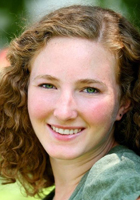
Lisbeth DaBramo ’15 will collaborate with Professor of Chemistry Tim Elgren on “Quantifying Exposures to Bis-Phenol A.” This is an analytical project in which she will use GC-MS to assess human exposure to BPA, a known endocrine disruptor, from a variety of commonly used products.
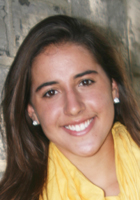
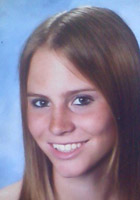 Sky Aulita ’15 and Kristina Choinski ’15 will collaborate with Robin Kinnel, the Silas D. Childs Professor of Chemistry Emeritus on “Synthesis of Anticancer Compounds Related to Hemiasterlin” on separate, but related synthesis projects. They will be synthesizing one of several particular analogues of the potent anticancer compound, hemiasterlin, originally isolated from a marine sponge. Once prepared, the compounds will be submitted for testing against a variety of cancer cell lines.
Sky Aulita ’15 and Kristina Choinski ’15 will collaborate with Robin Kinnel, the Silas D. Childs Professor of Chemistry Emeritus on “Synthesis of Anticancer Compounds Related to Hemiasterlin” on separate, but related synthesis projects. They will be synthesizing one of several particular analogues of the potent anticancer compound, hemiasterlin, originally isolated from a marine sponge. Once prepared, the compounds will be submitted for testing against a variety of cancer cell lines.
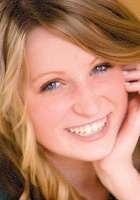 Leah Krause ’14 and mentor Professor Adam Van Wynsberghe will work on “Investigations of Oseltamivir-Neuraminidase binding pathways.” Using molecular dynamics simulations, they’ll investigate the detailed molecular interactions that occur during the binding process of the influenza protein neuraminidase and its inhibitor oseltamivir.
Leah Krause ’14 and mentor Professor Adam Van Wynsberghe will work on “Investigations of Oseltamivir-Neuraminidase binding pathways.” Using molecular dynamics simulations, they’ll investigate the detailed molecular interactions that occur during the binding process of the influenza protein neuraminidase and its inhibitor oseltamivir.
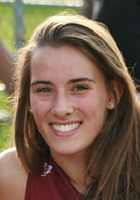 Clare O’Grady ’14 will work on a project is titled “Development of a molecular docking exercise to elucidate principles of biophysical chemistry in the general chemistry laboratory,” also with Van Wynsberghe. They are developing an open-ended exploratory computational exercise to allow general chemistry students to explore the binding energies and interactions of hormones and hormone-mimics with their receptors.
Clare O’Grady ’14 will work on a project is titled “Development of a molecular docking exercise to elucidate principles of biophysical chemistry in the general chemistry laboratory,” also with Van Wynsberghe. They are developing an open-ended exploratory computational exercise to allow general chemistry students to explore the binding energies and interactions of hormones and hormone-mimics with their receptors.
Posted April 4, 2013
